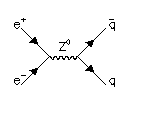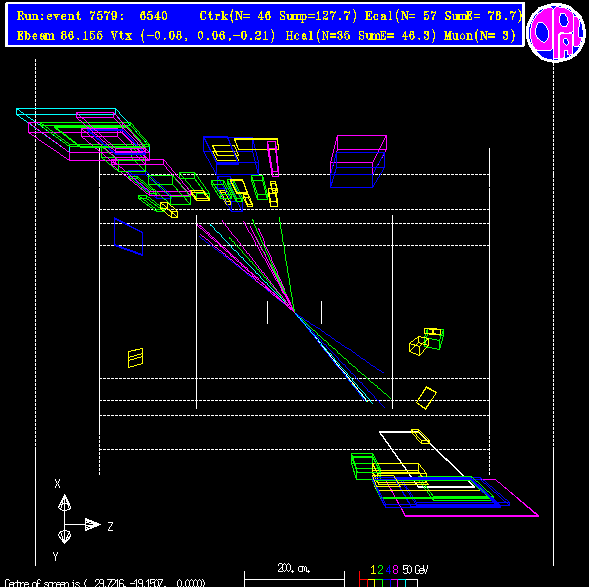Gluons are the particles responsible for holding the quarks together inside the proton, neutron and other hadrons.
Remember the diagram we used to represent
![]() events:
events:

A high energy gluon can be radiated from either the quark or the antiquark as shown in the following diagram:
 .
.
Notice this diagram looks quite similar to that for the radiation of a photon from a quark, which we looked at in the previous section. Unlike a photon we do not observe the gluon directly in our detector. Instead the gluon produces a shower (or "jet") of particles, just like a quark, and it is this jet of particles we observe in our detector.
The presence of a gluon in addition to a quark-antiquark pair produces an event containing three jets: Here is an example event:
Example
![]() Event Number 1
Event Number 1
End-On View of Event

|
Side View of Event

|
If two high energy gluons are radiated then we may see events with
four jets:
![]() .
.
Notice that such events can start to look very much like the
![]() events we looked at in an earlier section!
Sometimes it is impossible to say if a particular event belongs to one
type or the other.
events we looked at in an earlier section!
Sometimes it is impossible to say if a particular event belongs to one
type or the other.
![]() Next take a look at some example "four fermion"
events.
Next take a look at some example "four fermion"
events.
![]() Back to general section on "How to Identify Some Slightly More Complicated
Types of Event".
Back to general section on "How to Identify Some Slightly More Complicated
Types of Event".
![]() Back to Home Page with table of contents.
Back to Home Page with table of contents.